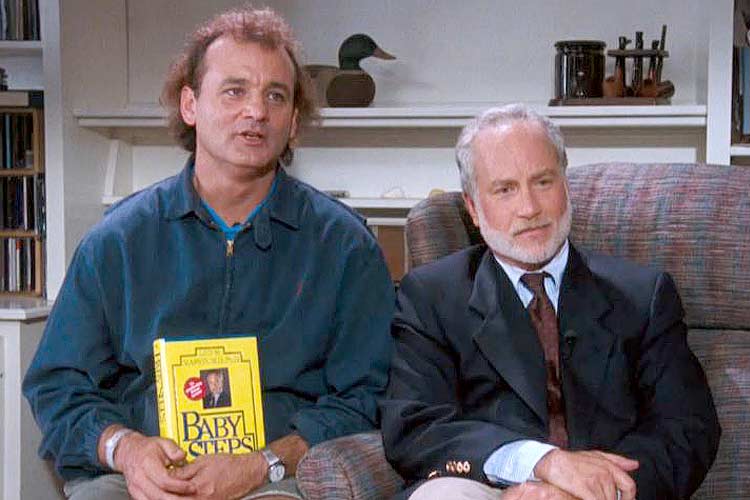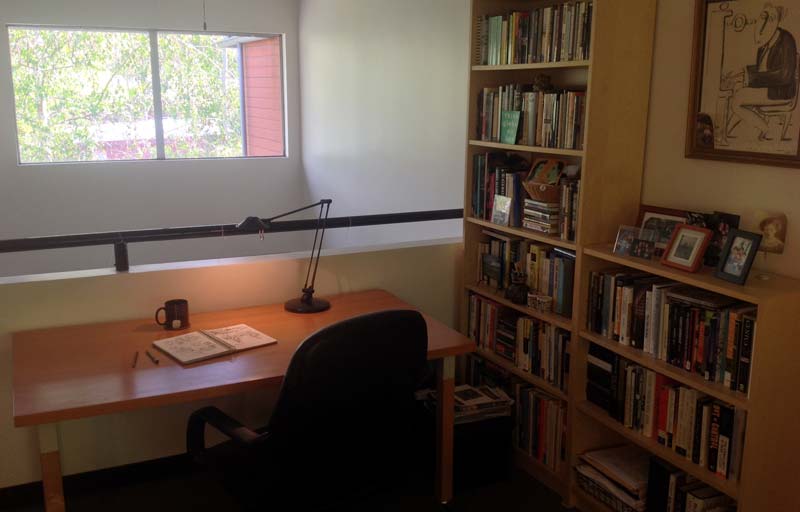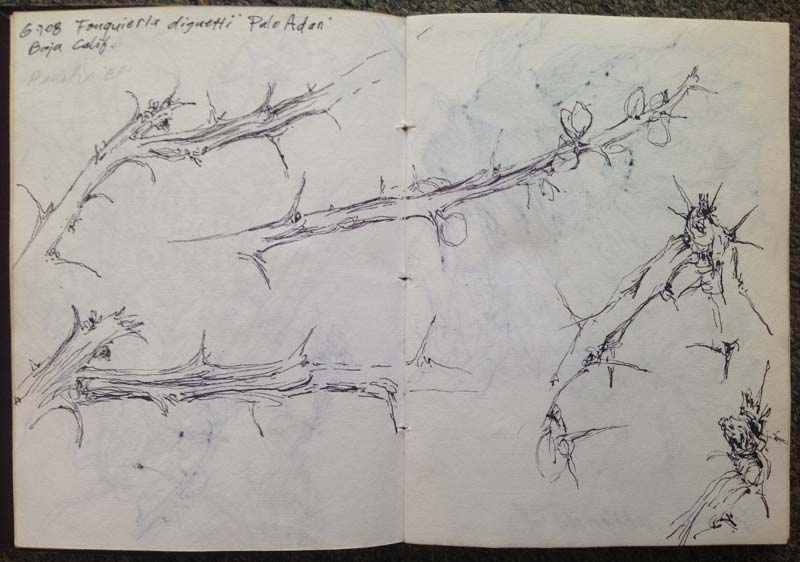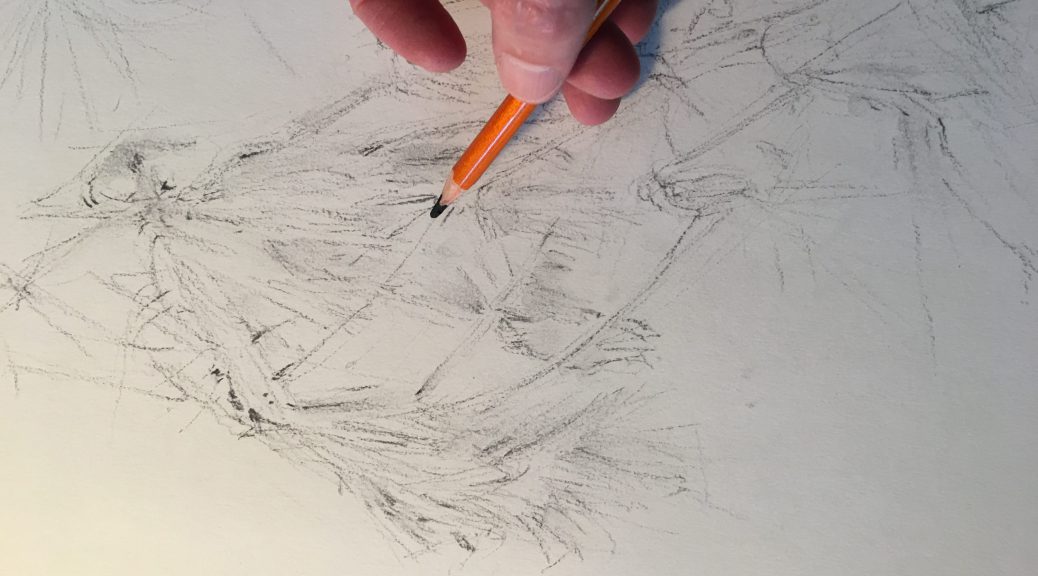
In the opening scene of the classic comedy What About Bob, we see a perplexed Bob Wiley, played by Bill Murray, contemplating his fate of stepping outside the door of his apartment and onto the streets of New York. He quickly becomes overwhelmed by his fears of just about everything and everyone in the world.
As Bob finally meets with Dr. Leo Marvin, played by Richard Dreyfuss, he sits in awe of the prominent psychiatrist’s suggestion to start with reasonable goals. “Don’t think of everything you have to do to get out of the building, Bob. Think about what you have to do to get out of this room,” says Dr. Marvin as he hands Bob a copy of his book Baby Steps. Comedic escapades ensue as Bob applies life-transforming small habits to the bigger complexities of life.
If it’s difficult for you to set—and maintain—your goal to draw regularly, try the advice given to Bob and take baby steps toward an easy and satisfying drawing habit.
Here are simple steps for starting your small drawing habit:
Make Drawing a Ritual
Twyla Tharp, the legendary ballet choreographer, is a New Yorker, just like Bob. However, Tharp’s morning routine is dramatically different than Bob’s. She wakes up at 5:30 a.m., gets dressed, walks confidently outside her Manhattan home to hail a taxi, which takes her to the gym for a two-hour workout. Instead of focusing on the complexities of the day, she focuses on an important ritual; getting into the cab and telling the driver where to take her. “It’s a simple act, but doing it the same way each morning habitualizes it—makes it repeatable, easy to do,” writes Tharp. “It reduces the chance that I would skip it or do it differently.”
Decide, right now, to schedule time for your own ritual of drawing.
Honor Your Time to Draw
And keep it short—even if it’s only a 5-minute doodle. Choose a convenient time for drawing that fits your schedule. Just as Dr. Marvin advises Bob to start with baby steps when going out the door, choose an amount of drawing time that you can manage. If it’s 20 minutes on Sunday mornings, dedicate that time slot for your small drawing ceremony. Knowing that it’s only for a short amount of time makes it easy to mark on your calendar and you’ll look forward to doing it.

Have a Special Place For Drawing
It’s vital to have a drawing haven just for you. Do everything possible to eliminate distractions. Start by turning off your phone and email. A secluded table near a window can be an ideal retreat. You may find that being away from home works better for your drawing ritual. A peaceful park bench or a table at a restaurant can also be your sanctuary for sketching pleasure. Use these places to let your conscious mind train your unconscious mind new drawing habits.
Plan for Spontaneity
Scheduling a time and place for drawing is important. But you never know when the drawing muse will come knocking on your door. Be prepared to seize the moment when the urge to draw strikes—anytime, anywhere. Take these wonderful opportunities to spend time to draw. These spontaneous compulsions can become more frequent as your drawing habit sets in—this is a good thing! Each little drawing you do strengthens your resolve to draw more.
“The patterns of our lives reveal us. Our habits measure us. Our battles with our habits speak of dreams yet to become real.” —Mary Oliver, writer (Hat tip to Maria Popova)
Trigger Your Drawing Habit
What are the things that make you want to draw? It might be listening to music or looking at artwork. It might be those boring staff meetings that trigger random doodles. Or it could be sitting at your secluded table by the window, sipping a cup of tea, that triggers your desire to draw. Choose places, things, or experiences that prime your brain for drawing and trigger you to take action.

Keep It Easy
The process of drawing can be complicated and daunting, let alone finding time to do it. Don’t sabotage your small drawing habit by trying to do intensive, detailed work. Joy can be found in your drawing routine by focusing on the practice itself rather than the results. Minimize anxiety by choosing easy drawings. Experiment with ways to keep your drawing style to a bare minimum and capture the essence of your subject. Make your drawings with a swift hand, but don’t hurry through them. These actions will keep you mindful of how fun it is to draw regularly. Always leave yourself wanting more when developing your small drawing habit.
Ironically, in the movie What About Bob, it is Dr. Leo Marvin’s stubborn resistance to change and Bob’s willingness to adopt new habits that become the focus of the story. Starting a new drawing habit, or changing old ones, is not always easy. Keep it fresh by changing up your drawing techniques and subject matter. Change your 10-minute morning doodling ritual to a 20-minute evening sketch of your family pet. A quick pencil sketch might turn into an afternoon with an avocado this week. Next week go on a hike and draw the branch of tree with a pen.
The longer you stay with your small drawing habit, the more it becomes a regular part of your day, and the easier it becomes to transform your life through drawing. As Gandhi said, “Your beliefs become your thoughts. Your thoughts become your words. Your words become your actions. Your actions become the habits. Your habits become your values. And your values become your destiny.”
Or as Dr. Marvin said about Bob’s success with baby steps, “It’s like mashed potatoes and gravy, Bob.”
Need help with your small drawing habit? Draw with me.
Rob Court
Latest posts by Rob Court (see all)
- Drawing With Friends - April 11, 2022
- Frozen in Time: Cellphone Users as Models to Draw - April 8, 2022
- Getting Out & Getting Real - June 20, 2021
- Life Lines: Sketching the Unseen World of Movement - June 20, 2021
- The Ups & Downs of Urban Sketching - May 9, 2021
